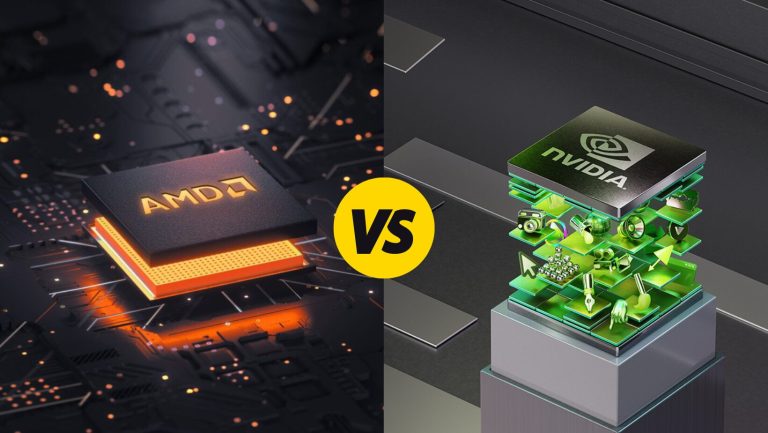Introduction: A Shifting Landscape in the Chip Industry
The rivalry between “AMD vs Nvidia” has long been a defining narrative in the semiconductor industry. However, recent analyses suggest a potential shift in the balance of power. Specifically, predictions indicate that “AMD” may possess significantly better growth prospects post-2028. This forecast stems from a confluence of factors, including strategic positioning, technological advancements, and evolving market dynamics.
AMD’s Strategic Positioning: Diversification and Innovation
Undoubtedly, “AMD” has demonstrated a remarkable ability to diversify its product portfolio. In particular, the company’s focus on CPUs, GPUs, and data center solutions has created a robust and versatile business model. Consequently, this diversification provides a buffer against market fluctuations and allows for growth in multiple sectors.
Moreover, “AMD’s” commitment to innovation is evident in its advancements in chiplet technology and high-performance computing. To be sure, these innovations are crucial for addressing the increasing demands of AI, cloud computing, and advanced gaming.
AMD Vs Nvidia: A Tale of Two Strategies

Essentially, the “AMD vs Nvidia” dynamic is characterized by contrasting strategic approaches. While Nvidia has dominated the GPU market, particularly for AI applications, AMD has focused on a broader range of products. In this regard, AMD’s strategy may provide a more sustainable growth trajectory in the long term.
Furthermore, the evolving market landscape, with increasing demand for diverse computing solutions, could favor AMD’s comprehensive approach.
The Data Center Boom: A Catalyst for AMD’s Growth
Notably, the data center market is experiencing explosive growth, driven by the proliferation of cloud computing and AI applications. In this sector, “AMD’s” EPYC processors have made significant inroads, challenging Intel’s dominance.
Additionally, “AMD’s” focus on providing high-performance, energy-efficient solutions aligns with the growing demand for sustainable data center operations. For example, their advancements in chiplet design help to reduce power consumption.
AI and HPC: AMD’s Emerging Strength
To be sure, the rise of artificial intelligence and high-performance computing (HPC) presents significant opportunities for “AMD.” In this regard, the company’s Instinct GPUs are gaining traction in the AI and HPC markets, providing a viable alternative to Nvidia’s offerings.
Moreover, “AMD’s” open-source software initiatives, such as ROCm, are fostering a growing developer community, which is crucial for the adoption of its AI solutions.
The Evolving Gaming Market: AMD’s Competitive Edge
Additionally, “AMD” continues to be a strong player in the gaming market, with its Radeon GPUs and Ryzen CPUs powering a significant portion of gaming PCs and consoles. In this sector, their competitive pricing and performance have attracted a loyal customer base.
To illustrate, their focus on delivering high-performance gaming experiences at competitive price points has proven successful. In other words, AMD has been able to keep pace with the high demand of the gaming industry.
Post-2028: Factors Favoring AMD’s Growth
Looking ahead to post-2028, several factors suggest that “AMD” may have significantly better growth prospects. First, the increasing demand for heterogeneous computing, which combines CPUs and GPUs, aligns with AMD’s product portfolio.
Second, the growing emphasis on energy efficiency and sustainability will likely favor AMD’s chiplet-based designs. Third, the diversification of the semiconductor supply chain, driven by geopolitical concerns, could create new opportunities for AMD.
The Importance of Open Ecosystems: AMD’s Strategic Advantage
Essentially, “AMD’s” commitment to open ecosystems, such as ROCm and open standards, provides a strategic advantage. In this regard, open ecosystems foster collaboration and innovation, which are crucial for long-term growth.
Moreover, open ecosystems reduce reliance on proprietary technologies, which can be a significant advantage in a rapidly evolving market.
Challenges and Opportunities: Navigating the Future
However, “AMD” also faces challenges, including intense competition from Nvidia and Intel. In the final analysis, the company’s ability to navigate these challenges will determine its future success.
Nevertheless, the opportunities presented by the growing demand for AI, data center solutions, and high-performance computing are significant. In this regard, “AMD” is well-positioned to capitalize on these opportunities.
Conclusion: A Promising Future for AMD
In summary, the “AMD vs Nvidia” rivalry is poised for a potential shift, with “AMD” showing promising growth prospects post-2028. The company’s strategic diversification, technological innovation, and commitment to open ecosystems are key factors driving this growth.
Additionally, the evolving market landscape, characterized by increasing demand for diverse computing solutions, favors AMD’s comprehensive approach. In conclusion, while Nvidia remains a formidable competitor, AMD’s long-term growth potential is significant, driven by its strategic positioning and technological advancements.



Pingback: An Evening With Elton John and Brandi Carlile: A Musical Convergence - Jawa Post